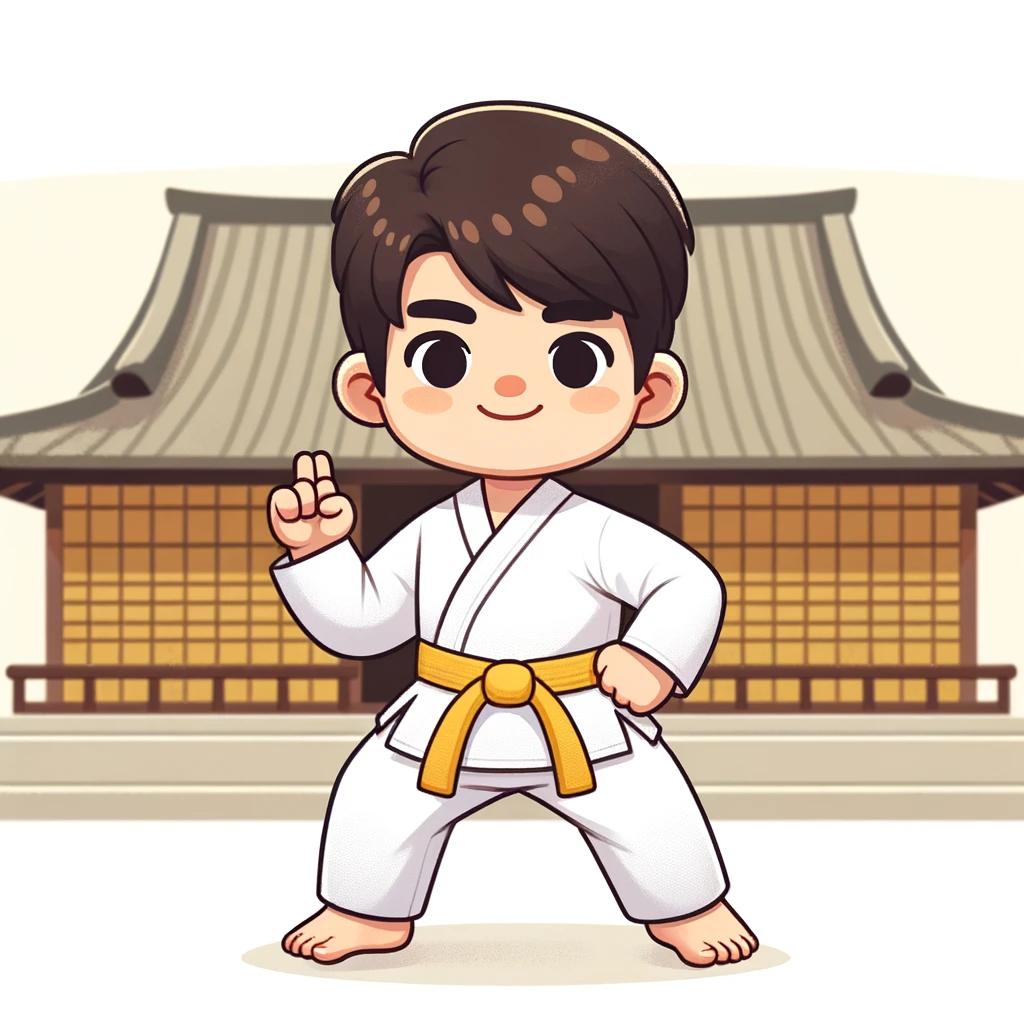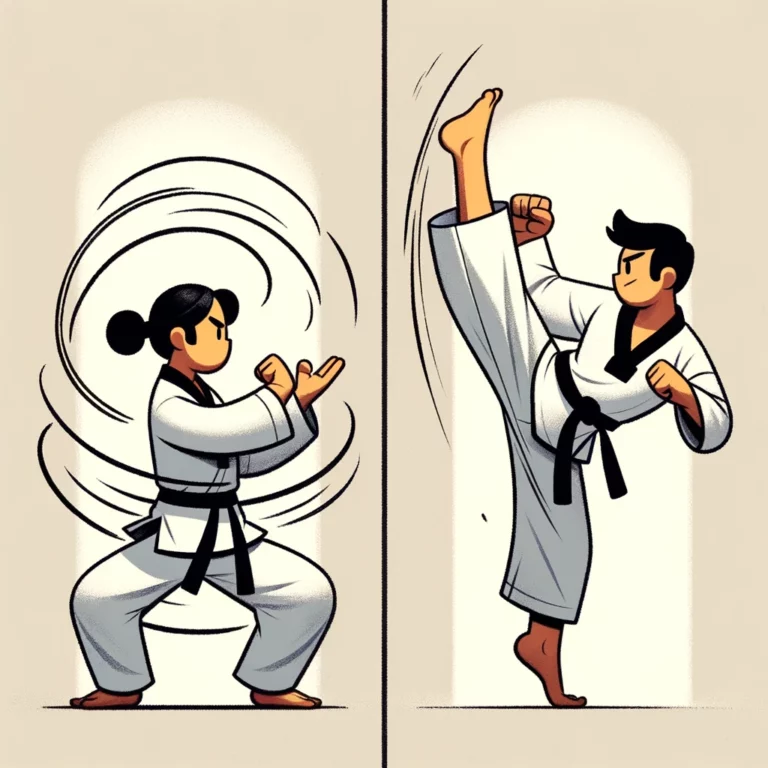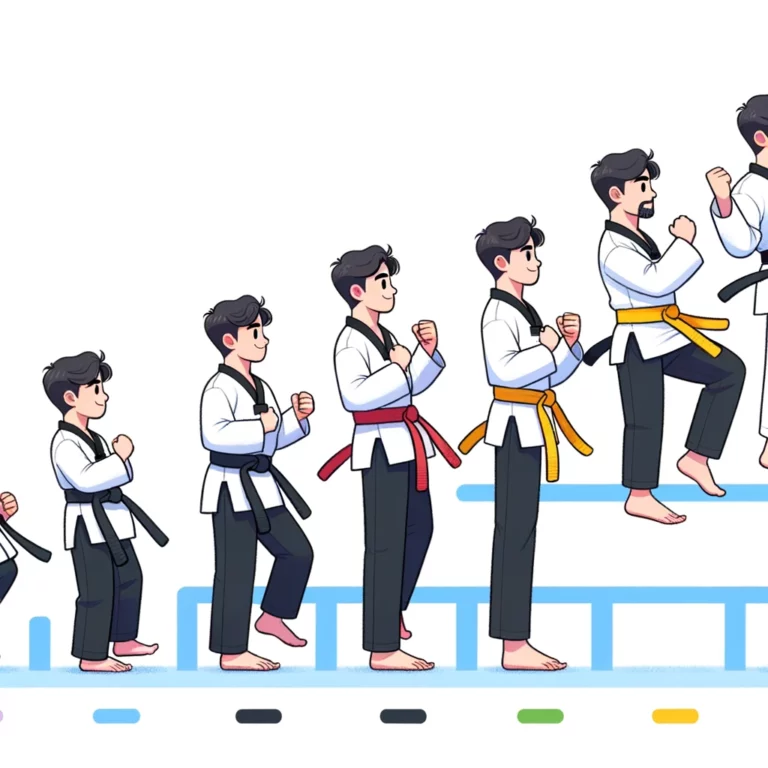What to Expect When Learning Taekwondo
Taekwondo is a traditional Korean martial art that has gained popularity worldwide. This article will discuss “Is it hard to learn Taekwondo?”
Taekwondo is a traditional Korean martial art that has gained popularity worldwide. But is Taekwondo hard to learn?
Taekwondo involves various techniques, kicks, punches, and forms. Here’s what you can expect when you start Taekwondo training:
First and foremost, you can anticipate a rigorous training routine. Taekwondo requires discipline and commitment, and you will likely spend several hours each week in the dojang (Taekwondo school). This training hall is where you start your Taekwondo journey, learning different techniques and engaging in martial arts training to build endurance and flexibility.
It is essential to come prepared with comfortable workout clothes and a willingness to push yourself physically. In Taekwondo, you will also learn to embrace a belt system, with different coloured belts representing proficiency levels, from white to black belts. This system allows for progression and serves as a visual marker of achievement, motivating you to continue your journey in this fantastic martial art.
Additionally, expect to be challenged mentally. Taekwondo emphasizes focus, self-discipline, and patience. You will be required to memorize various patterns, or poomsae, which are prearranged sequences of movements.
This enhances physical coordination and trains your mind to concentrate and remember details. Moreover, as you progress in your training, you will be exposed to sparring and other combat techniques, enriching your understanding of practical self-defence.
With time and practice, you will develop the ability to react quickly and make split-second decisions, improving your overall situational awareness. Overcoming difficulties during your Taekwondo journey will contribute to the development of new skills that are valuable both on and off the training mat.

The Benefits of Learning Taekwondo
One of the main benefits of learning Taekwondo is the improvement of physical fitness. Taekwondo practitioners engage in high-intensity training sessions that involve various exercises, such as punches, kicks, and jumps. These movements help build strength, endurance, flexibility, and cardiovascular health. Regular practice of Taekwondo can lead to weight loss, increased muscle tone, and improved overall physical health. Additionally, the fast-paced nature of the sport requires quick reflexes and enhances agility and coordination. Learning Taekwondo is a fantastic way to achieve your fitness and life goals while having fun and making new friends.
Another significant benefit of learning Taekwondo is the development of mental discipline and focus. Taekwondo training involves intense concentration and requires practitioners to block out distractions and focus on executing precise techniques.
This focus and discipline transfers from the training mat to other aspects of life, including work, studies, and daily interactions. Regular practice of Taekwondo teaches self-control, patience, and perseverance, encouraging practitioners to push through challenges and emerge stronger. This mental discipline honed through Taekwondo can positively impact personal and professional achievements in various areas of life.
The Basic Techniques of Taekwondo
In Taekwondo, mastering the basic techniques is crucial for any practitioner. These techniques are the foundation for developing more advanced skills and are the building blocks of martial arts training. One of the fundamental techniques in Taekwondo is the punch, which focuses on generating power from the rotation of the hips and the extension of the arms. A proper punch involves a tight fist, correct alignment of the wrist, and precise execution of the movement, which helps in developing both strength and accuracy.
Another essential technique in Taekwondo is the kick, which showcases the art’s dynamic and high-flying nature. The basic kicks in Taekwondo include the front, roundhouse, side, and back, each highlighting different aspects of flexibility, speed, and power.
Executing these kicks requires a combination of proper body alignment, balance, coordination, and timing. Practitioners often spend significant time perfecting these techniques to ensure they can execute them effectively in various situations and combat scenarios. The fast kicks in Taekwondo are an exciting part of learning this martial art and contribute significantly to developing self-defence skills.
Basic Techniques Summary
- Punch: Focuses on generating power from hip rotation and arm extension. Requires a tight fist, correct wrist alignment, and precise execution to develop strength and accuracy.
- Kick: Showcases the dynamic nature of Taekwondo. Basic kicks include the front kick, roundhouse kick, side kick, and back kick. Each kick emphasizes flexibility, speed, and power, requiring proper body alignment, balance, coordination, and timing.
The Importance of Discipline in Taekwondo
Discipline plays a crucial role in Taekwondo. It is one of the fundamental principles instilled in students from the beginning. Taekwondo requires a high focus and commitment; it becomes challenging to excel in this martial art without discipline.
Discipline helps students stay dedicated to their practice, show up for training consistently and put in the effort needed to progress. The journey from white to first-degree black belt involves hard work, goal setting, and dedication.
Furthermore, discipline in Taekwondo extends beyond just the physical aspect of training. It encompasses mental and emotional discipline as well. Students are taught to control their thoughts, emotions, and actions on and off the training mats. This self-control improves their performance in Taekwondo and carries over into other aspects of their lives. Through discipline, practitioners develop resilience, patience, and determination, which are invaluable qualities that can be applied in various areas, such as academics, career, and personal relationships.
As we delve deeper into the importance of discipline in Taekwondo, it becomes evident that it is a foundation for personal growth and character development. The discipline instilled in practitioners helps to shape their behaviour, attitude, and values.
It teaches them to respect themselves, their instructors, and their fellow students. Discipline in Taekwondo also fosters a sense of responsibility as individuals learn to take ownership of their actions and decisions. By integrating discipline into their lives, Taekwondo students become more focused on their goals and better understand the importance of perseverance and integrity.

How Taekwondo Builds Confidence
One of the critical ways that Taekwondo builds confidence is through the progression and mastery of skills. Students gradually develop competence in various techniques and forms as they continue practising Taekwondo. This sense of improvement and accomplishment naturally boosts self-assurance and belief in one’s abilities.
Furthermore, Taekwondo classes’ supportive and encouraging environment also plays a significant role in building confidence. Qualified instructors provide guidance and feedback in a typical Taekwondo class, while fellow students offer motivation and camaraderie.
His positive reinforcement fosters a sense of belonging and empowers individuals to take risks, knowing they have a support network to fall back on. As a result, practitioners gain confidence in their potential and become more willing to push beyond their perceived limitations.
Learning self-defence skills also gives individuals the confidence to defend themselves in challenging situations, making Taekwondo a fantastic way to learn self-defence while gaining new skills and boosting confidence.

What can I expect when learning Taekwondo?
When learning Taekwondo, you can expect to learn various techniques, improve your physical fitness, gain discipline, and build confidence. It is a fantastic martial art that challenges you mentally and physically and helps you achieve your life goals.
What are the benefits of learning Taekwondo?
Learning Taekwondo offers numerous benefits, such as improved physical fitness, increased flexibility, self-defence skills, enhanced focus and concentration, and the development of discipline and confidence.
What are some basic techniques of Taekwondo?
Some basic techniques of Taekwondo include punches, kicks, blocks, stances, and forms (also known as patterns or poomsae).
Why is discipline necessary in Taekwondo?
Discipline is essential in Taekwondo. It helps individuals stay focused, follow instructions, and develop self-control. It also instils respect for others and promotes a positive and disciplined mindset.
How does Taekwondo build confidence?
Taekwondo builds confidence by providing individuals with a sense of accomplishment as they progress through belt levels and master new techniques. It also teaches self-defence skills, enhances physical fitness, and offers a supportive training environment with qualified instructors.
Conclusion
In conclusion, Taekwondo is a fantastic martial art that offers numerous benefits, from improving physical fitness and teaching self-defence skills to develop discipline and building confidence. Whether you are a child, a teenager, or an adult, Taekwondo can be a great way to learn martial arts, set life goals, and overcome difficulties. The journey requires hard work and dedication but provides immense satisfaction and personal growth. Whether you start Taekwondo for self-defence, fitness, or as a fun activity with friends, the experience will be rewarding. It is a martial art that truly prepares you for challenges both on the mat and in daily life, providing you with new skills, a sense of achievement, and the confidence to take on the world.







